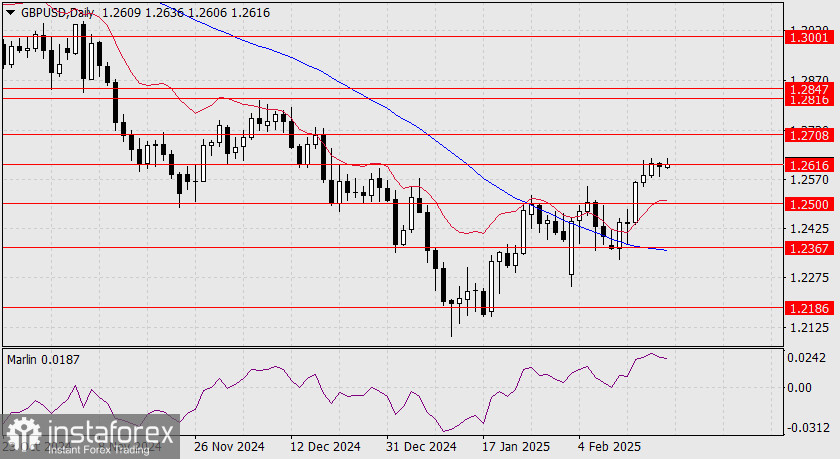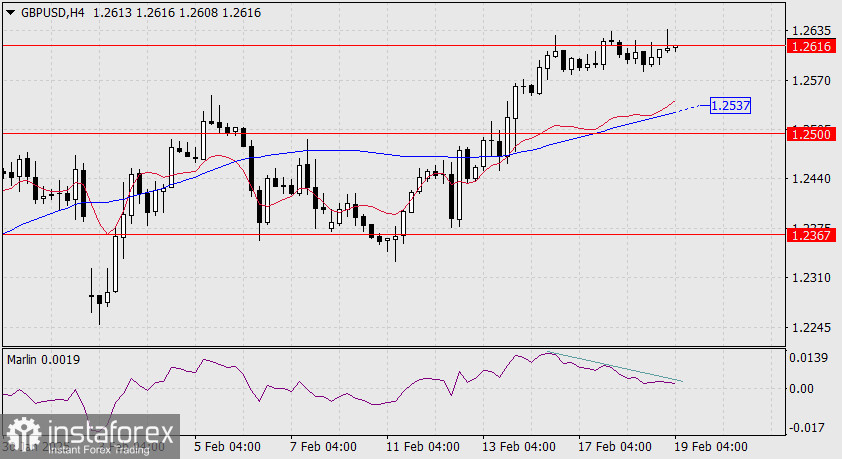The UK employment data for December, released yesterday, helped the pound avoid a decline, even though the dollar strengthened by 0.34%. The pound fell by only 0.10%, while the euro dropped by 0.32%. The unemployment rate remained unchanged at 4.4%, matching November's figure and defying expectations of an increase to 4.5%.

During the Pacific session, the pound attempted to break above resistance at 1.2616 but was unsuccessful. If today's session closes below this level, a drop towards the support level at 1.2500 is likely to become more pronounced. The Marlin oscillator on the daily timeframe has turned downward. A break below 1.2500 would open the way for a decline to 1.2367, where the MACD line is located. Consolidation above 1.2616 will enable the price to rise to 1.2708 and beyond. The likelihood of reaching the lower target is 60%.

On the H4 chart, a weak double divergence has formed. However, the weakness of this formation poses a risk of the oscillator's signal line reversing from the zero level. The price still has the potential to break above today's high and consolidate. To do this, it must take control, break below yesterday's low at 1.2581, and pull the oscillator into negative territory.
The primary support level for the price is the MACD line, which is around the 1.2537 mark.





















